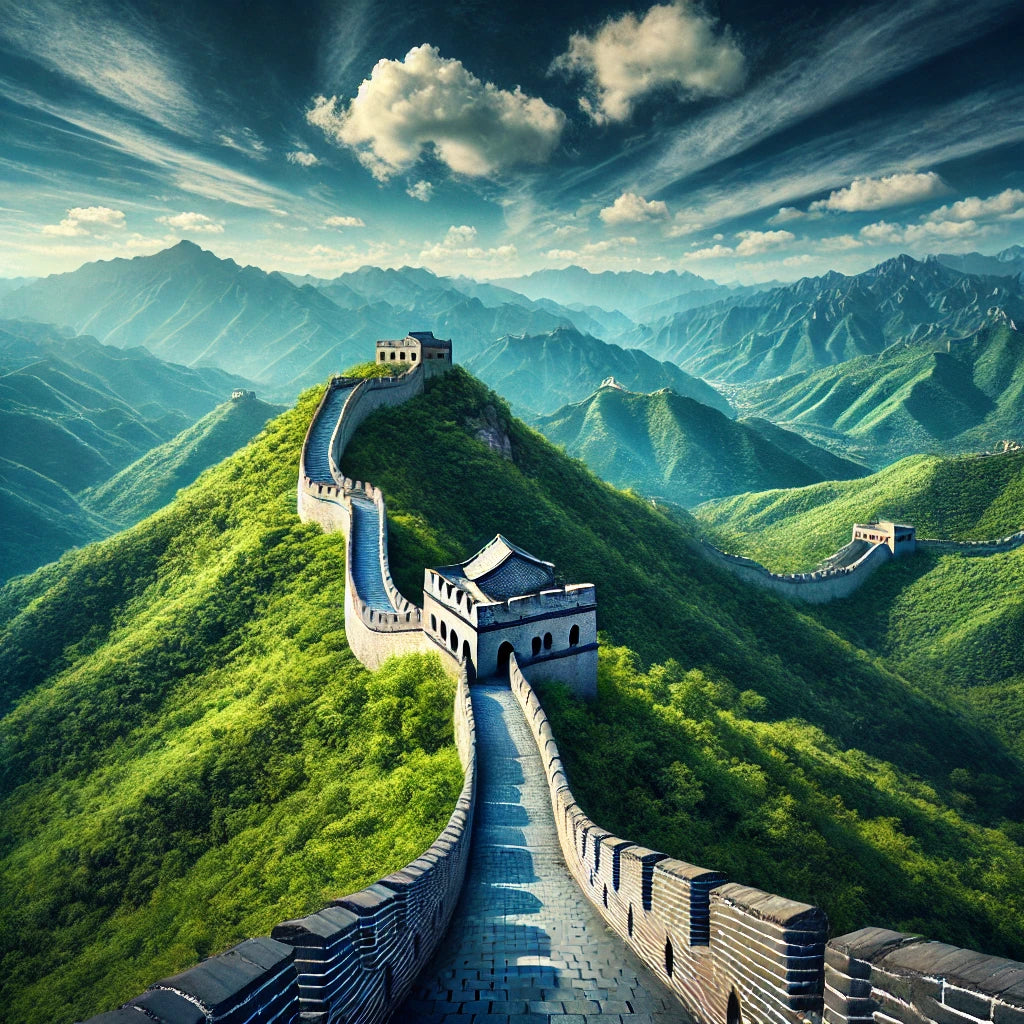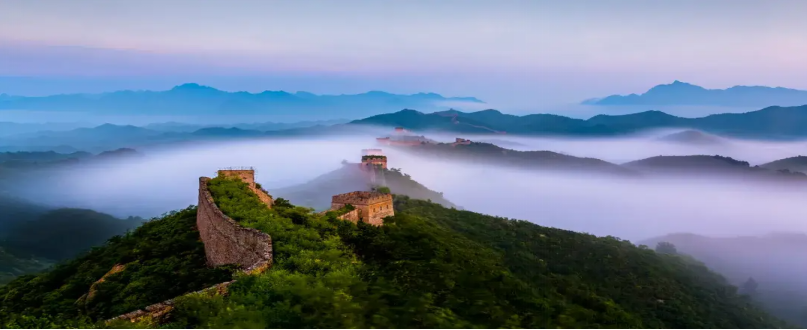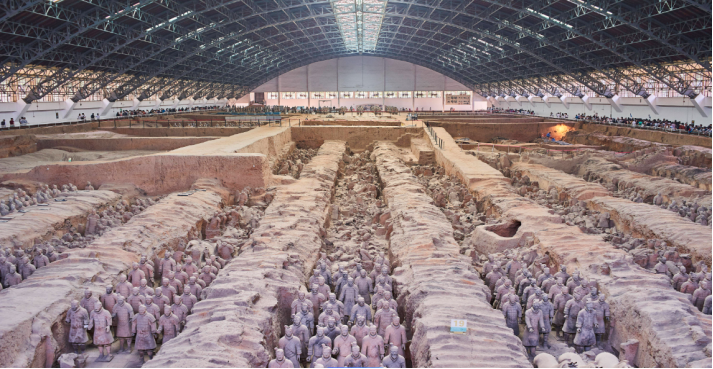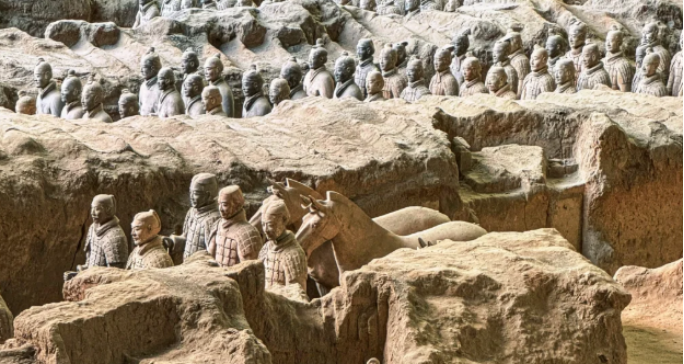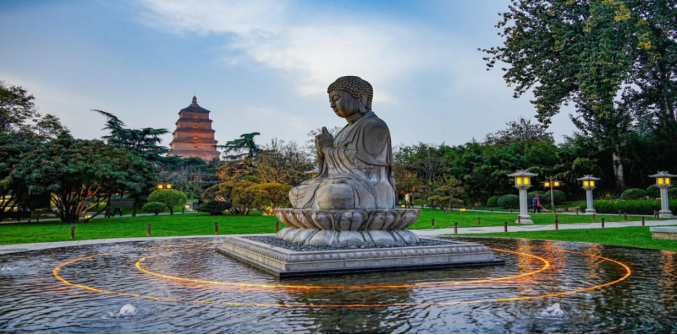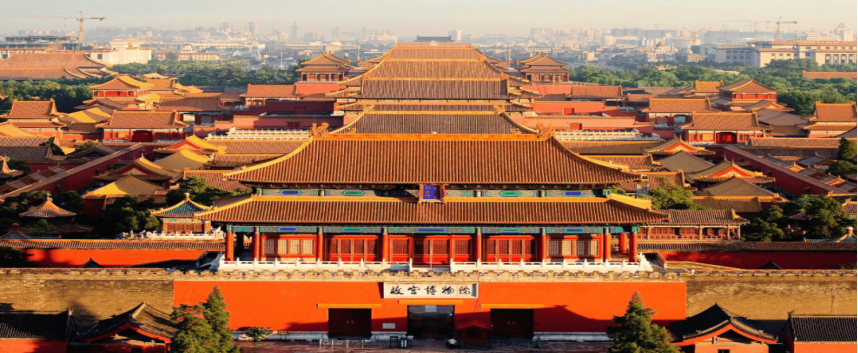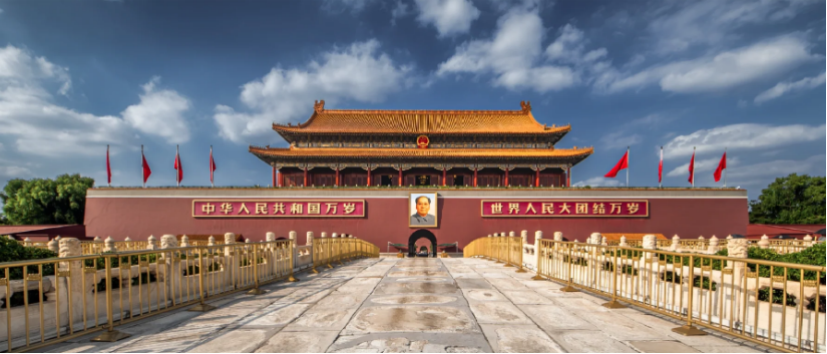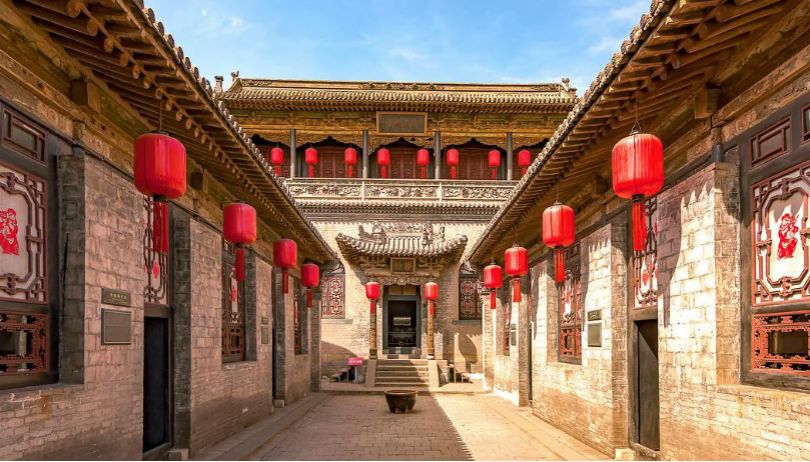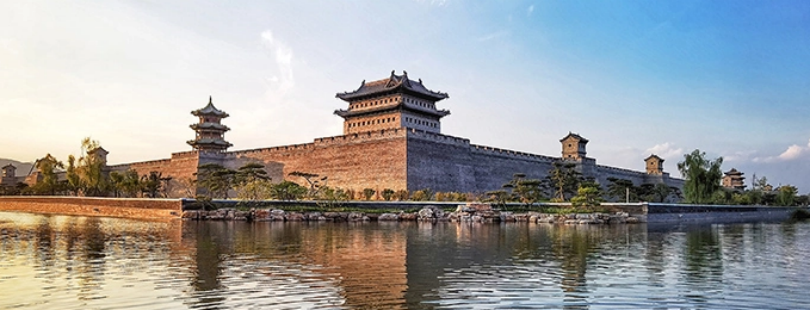PxUnicorn
Timeless China: 9-Day Tour Through Ancient Echoes
Timeless China: 9-Day Tour Through Ancient Echoes
Verfügbarkeit für Abholungen konnte nicht geladen werden
Timeless China: A Journey Through Ancient Echoes
《华夏古韵·漫步时空之旅》
9 Days 8 Nights In-depth Tour of Ancient Chinese Cities and the Terracotta Warriors
As an ancient civilization, China has a long history spanning over five thousand years and is rich in profound and extensive traditional culture. Chinese traditional culture embodies the deepest spiritual pursuits of the Chinese nation, representing the unique spiritual identity of the Chinese people. It provides the rich nourishment that has enabled the continuous growth and development of the Chinese nation and forms the cultural soil in which socialism with Chinese characteristics is rooted. It also serves as the foundation for maintaining a firm stance amid the tumult of global cultural dynamics.
Tour Highlights:
-
Walk along China’s iconic Great Wall
-
Explore historic sites in Beijing
-
Visit the ancient city of Pingyao
-
Visit the mysterious Terracotta Warriors
-
Experience travel on China's high-speed rail
Brief Itinerary:
Day 1: Arrive in China, land in Beijing
Day 2: Beijing city tour (The Forbidden City, Temple of Heaven, Tiananmen Square)
Day 3: Day trip to the Mutianyu Great Wall
Day 4: Beijing to Taiyuan - Jinci Temple - Taiyuan Ancient County
Day 5: Shanxi Museum - Chang Family Mansion - Qiao Family Courtyard - Pingyao Ancient City
Day 6: Day tour of Pingyao Ancient City
Day 7: Pingyao to Xi’an
Day 8: Xi’an city tour (Terracotta Warriors, Big Wild Goose Pagoda, Ancient City Wall, Muslim Street)
Day 9: Return trip from Xi’an
Detailed Itinerary:
Day 1: Arrive in China, land in Beijing After arriving in Beijing, check into the hotel and rest, preparing to begin the 8-day tour of ancient Chinese cities.
Day 2: Beijing city tour (The Forbidden City, Temple of Heaven, Tiananmen Square)
After breakfast, start a full-day tour of Beijing's famous attractions, including The Forbidden City, the Temple of Heaven, and Tiananmen Square.
Forbidden City: The Forbidden City, formerly known as the Imperial Palace during the Ming and Qing Dynasties, is located at the centre of Beijing's central axis. Centred around the three main halls, it consists of over seventy palaces and is one of the largest and best-preserved ancient wooden structure complexes in the world.
Temple of Heaven: Originally called the "Altar of Heaven and Earth," located in the Dongcheng District of Beijing. It was the site where the emperors of the Ming and Qing dynasties performed rites to pray for good harvests and rain. It is the largest ancient sacrificial building complex in China.
Tiananmen Square: Tiananmen Square, having undergone several modifications and changes, has ultimately become a large square extending 880 meters north to south and 500 meters east to west, covering an area of 440,000 square meters, making it the largest city square in the world. Positioned along the central axis of Beijing, it is symmetrical and capable of hosting up to a million people for large gatherings. From north to south along the central axis, the square is lined with the national flagpole, the Monument to the People's Heroes, the Chairman Mao Memorial Hall, and the Zhengyangmen Gate Tower.
Day 3: Mutianyu Great Wall — Summer Palace
After breakfast, visit the famous section of the Great Wall at Mutianyu, exploring this magnificent structure and its grand ancient military engineering. Later, return to the city to visit the Summer Palace. Mutianyu Great Wall: Known for its beauty as "the unique section among the Great Wall stretches," Mutianyu has a total length of 5,400 meters and is the longest wall in China. It represents the essence of the Great Wall from the Ming dynasty, featuring strategic watchtowers like the Zhengguantai and the imposing Big Corner Tower. The wall here is well-preserved, embodying the ancient charm of the Great Wall, offering profound historical and high cultural value.
Summer Palace: The Summer Palace, a royal garden from the Qing dynasty, originally known as Qingyi Garden. It utilizes Kunming Lake and Longevity Hill as its base, modelled after the scenery of Hangzhou's West Lake and incorporating some design techniques and artistic concepts of southern Chinese gardens. It is the most completely preserved royal palace and garden, often referred to as a royal garden museum.
Day 4: Beijing — Taiyuan — Jinci Temple — Ancient County of Taiyuan After breakfast, take a high-speed train to Taiyuan, where you can see classic examples of Song dynasty aesthetics, such as the Holy Mother Hall at Jinci Temple and the ancient county of Taiyuan from the Ming dynasty.
Jinci Temple: Originally named Jin Wang Temple, built to commemorate the founder of the state of Jin, Duke Shu Yu of Tang (later posthumously named King of Jin) and his mother, Marquess Yi Jiang. It features unique sights like the Nanlao Spring, the Maid Statue, and the Zhou Cypress, known as the "Three Wonders of Jinci." Jinci is the earliest existing imperial ancestral garden in China and a comprehensive carrier of Chinese ancient architectural art. It holds structures from the Song, Yuan, Ming, Qing, and Republic periods and contains national treasures like colourful sculptures, murals, and steles.
Ancient County of Taiyuan: Founded in the eighth year of the Hongwu reign of the Ming dynasty and belonging to Taiyuan Prefecture of Ming and Qing dynasties, it has over 600 years of history. Restored over eight years, the main attractions of Taiyuan Ancient County now include Long'en Temple, City God Temple, Jade Emperor Temple, Guandi Temple, Confucius Temple, the county government offices, and the Kui Xing Tower, among others, letting visitors immerse themselves in the Ming and Qing era atmosphere and engage with history.
Day 5: Shanxi Museum — Chang Family Mansion — Qiao Family Courtyard — Pingyao Ancient City After breakfast, travel to the northern Shanxi residences, including the Qiao Family Courtyard and the representative garden of northern Shanxi, Chang Family Mansion.
Shanxi Museum: Covering an exhibition area of 13,000 square meters and a storage area of 12,000 square meters, the museum holds over 500,000 items, featuring bronzes, ceramics, stone carvings, Buddhist statues, murals, and calligraphy and paintings. Among them are 40,282 precious artefacts, including 2,129 class I national treasures and over 110,000 volumes of ancient books. The basic displays are themed "Soul of Jin," encompassing seven historical and cultural themes and five artistic subjects.
Chang Family Mansion: Known as the "Confucian business family," the Chang Family Mansion in Dongyang Town, Yuci, was originally built during the Qianlong and Jiaqing reigns of the Qing dynasty, and after several renovations, it now covers an area of 600,000 square meters with over 4,000 rooms, more than 50 buildings, and 13 small gardens.
Qiao Family Courtyard: Also known as Zai Zhong Hall, the complex is shaped like the double "Xi" (happiness) character, divided into six courtyards, reflecting the customs of the Jinzhong area of Shanxi. Displays include agriculture, rites of passage, seasonal festivals, daily life, business customs, and folk crafts, as well as special exhibitions on the history of the Qiao family and treasures from the Qiao family, showcasing the grandeur and unique style of Qing dynasty residential architecture.
Day 6: One-Day Tour of Pingyao Ancient City After breakfast, tour this well-preserved ancient city, strolling through its old streets to visit one of China's earliest banks, the ancient city wall, and the Confucius Temple. Pingyao Ancient City: Founded during the Western Zhou dynasty, Pingyao is one of the best-preserved ancient county cities in China today. It is an outstanding example of a Han Chinese city from the Ming and Qing dynasties, retaining all its characteristics and offering a unique cultural, economic, social, and religious development panorama throughout Chinese history. Rishengchang: Rishengchang Exchange Shop, one of the earliest financial institutions in China, still retains its original south-facing layout with three courtyards (central, east, and west). The site is preserved with its complete layout and Qing dynasty architectural features, reflecting its commercial heritage. City Wall: The Pingyao City Wall was originally built during the Western Zhou period and has been rebuilt and expanded over the centuries to its current form. The square-shaped wall measures a total of 6,142.63 meters in perimeter, featuring battlements, horse-face walls, embrasures, gates, and barbicans, with the entire structure encompassing various defensive and architectural elements. County Government Office: Located at the symmetrical centre of the ancient city, the Pingyao County Government Office is the most completely preserved and largest feudal government office in China today, representing a comprehensive embodiment of local architectural features. Confucius Temple: Also known as Pingyao Wenmiao (Confucian Temple), it was initially built in the early Tang dynasty. The temple complex extends from the south facing the city wall to the north near Chenghuang Temple Street. The central layout includes the Confucian Temple with schools on both sides. The main axis features the Lingxing Gate, Dacheng Gate, Dacheng Hall, Minglun Hall, Jingyi Pavilion, and Zunjing Pavilion, spreading over six courtyards, with an archway on each side spanning across the street.
Day 7: Pingyao to Xi'an After breakfast, take a train to Xi'an. Upon arrival, you can arrange your own time to explore this ancient capital. Recommended Attractions:
Shaanxi History Museum: Known as the "Jewel of Ancient Capitals" and "Treasure House of China," Shaanxi History Museum is China's first large-scale modern national museum. It holds over 1.7 million items, including 762 national first-class artefacts and 18 national treasure-level items, some of which are among the first batch of items forbidden from international exhibitions. Recognized by UNESCO as a world-class museum, it reflects the rich cultural and historical heritage of Shaanxi, a region that served as the capital for several dynasties such as the Zhou, Qin, Han, Sui, and Tang.
Tang Paradise: Located at the foot of the Big Wild Goose Pagoda in Xi'an, Tang Paradise is China's only large-scale Tang Dynasty-style architectural complex and pedestrian street, marking a landmark of Xi'an. Stretching from the South Square of the Big Wild Goose Pagoda to the remnants of the Tang city wall, and from Cien East Road to Cien West Road, the area features Tang Dynasty-style elements with major squares like Zhenguan Square and Kaiyuan Square, as well as thematic sculptures like the Wan Guo Lai Chao (All Nations Coming to Court) and Tang Dynasty Cultural Relief Columns.
Day 8: One-Day Tour in Xi’an (Terracotta Warriors, Big Wild Goose Pagoda, Ancient City Wall, Muslim Street) After breakfast, visit Xi’an’s iconic landmarks including the Terracotta Warriors, the renowned Big Wild Goose Pagoda, the Ancient City Wall, and the bustling Muslim Street.
Terracotta Warriors: Also known as the Terracotta Army of Emperor Qin Shi Huang, these are part of the first batch of UNESCO World Heritage Sites in China and have been visited by over 200 foreign dignitaries, symbolizing the glory of ancient Chinese civilization and recognized as one of the world’s top ten ancient tombs.
Ancient City Wall: The Xi’an City Wall is one of the largest and best-preserved ancient city walls in China, a key national cultural relic protection unit and the only city wall among them. Big Wild Goose Pagoda: As the earliest and largest square pavilion-style brick tower from the Tang Dynasty, the Big Wild Goose Pagoda is a symbol of the architectural style that evolved from ancient Indian Buddhist temple styles, which merged with Chinese culture.
Muslim Street: Famous for its culinary culture, Muslim Street is a collective name for several streets that showcase the blend of multiple ethnic cultures and retain traces of ancient East-West trade. The mosques in this area highlight the inclusiveness of diverse religious practices, making Muslim Street a favourite year-round destination for both domestic and international tourists.
Day 9: Return from Xi'an After breakfast, conclude your 9-day tour of ancient Chinese cities and head to the airport for your return flight.
- Price:
- 1 person: £3260
- 2 people: £1960
- 4 people: £1450
Price Includes:
-
Private vehicle with driver, private tour guide services
-
Detailed train tickets within the itinerary
-
8 nights in 4-star hotels
-
8 breakfasts and 6 lunches
Price Excludes:
-
International flights
Share
